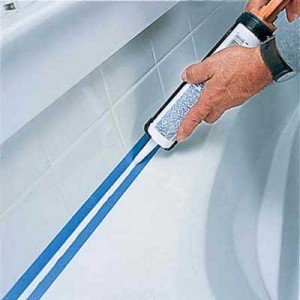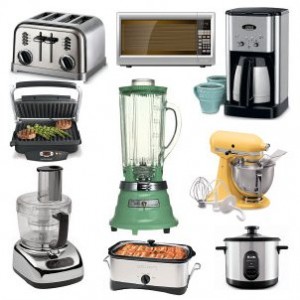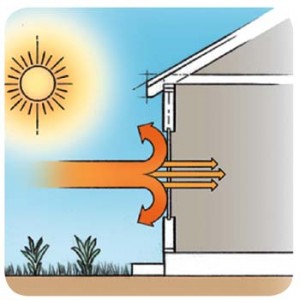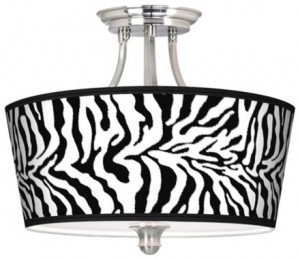Patching and Repairing
November 22, 2011 by
Filed under Blog
Choosing the Right Seal for Your Project

Once the climate drives us indoors, don’t we tend to notice things that need attention and some degree of repair? Those nail holes, for instance, that haven’t been filled since you moved your artwork around on your walls? Okay, it’s true, the seal above is not the one you’ll need…but he was too cute to ignore! Instead, here are some tips on which products to choose for your sealing and patching projects:
Caulking comes in several different materials and has many uses. Its purpose is to seal surfaces together to keep them non-porous, watertight or airtight. You will need a caulking gun to apply the following caulking materials:
- Silicone Sealant: This is a rubber-like material that seals two surfacestogether. It is effective at keeping moisture in or out, mostly used in bathrooms and kitchens, around sinks, f
 aucets, tubs and toilets. Depending on the brand, it may come in multiple colors. Most 100% silicone sealants are not paintable, but check the specs on the packaging. Good for both indoor and outdoor projects. You can also find an aquarium silicone sealant.
aucets, tubs and toilets. Depending on the brand, it may come in multiple colors. Most 100% silicone sealants are not paintable, but check the specs on the packaging. Good for both indoor and outdoor projects. You can also find an aquarium silicone sealant. - Painter’s Caulk: This is a paintable acrylic latex caulking material that is good for sealing baseboards, trim work around doors and windows, crown molding, counters and siding, to name a few. It is also good for filling nail holes in drywall if you don’t have spackling paste. It dries rapidly and can typically be painted within 30 minutes. Good for both indoor and outdoor projects.
- Siliconized Caulk: This is basically siliconized painter’s caulk (acrylic latex). It is great as a general use caulk, comes in a few (though limited) colors, is easy to use, and some brands are paintable. If you want to use it around sinks and faucets, make sure to buy one with an antimicrobial additive, to slow the growth of mold and mildew.
There are a couple of other products you will find useful as well:
Siliconized Grout: This is an effective sealant to apply along the perimeter of tiled rooms, where the baseboards meet the tiled floors. It comes as a sanded or unsanded product, and most varieties can be color-matched to your grout color. This sealant will appear as grout, but because of the silicone, it will protect against moisture, draft and rot, and last much longer.
 Spackling Paste: Made of gypsum powder and glue to make a paste, most of us know it by the brand name Spackle®. It is perfect for filling holes, and repairing walls and ceilings. This paste comes in light, intermediate and heavy weight mixtures, as well as differing levels of “performance,” depending upon intended use. Small holes need only a lightweight paste, while larger holes require a heavier paste. Most of us keep a small container of spackling paste handy. In a pinch, believe it or not, you can use a dab of toothpaste to fill holes as well.
Spackling Paste: Made of gypsum powder and glue to make a paste, most of us know it by the brand name Spackle®. It is perfect for filling holes, and repairing walls and ceilings. This paste comes in light, intermediate and heavy weight mixtures, as well as differing levels of “performance,” depending upon intended use. Small holes need only a lightweight paste, while larger holes require a heavier paste. Most of us keep a small container of spackling paste handy. In a pinch, believe it or not, you can use a dab of toothpaste to fill holes as well.
Construction Adhesive: While caulking has some adhesive properties, it’s not the best choice for an adhesive. A general construction adhesive is best for providing extra holding power, such as Liquid Nailz or Locktite Powergrab. The term “glue it and screw it” refers to gluing wood together before you put nails or screws in it. If the nails or screws become loose over time, the glue holds it together. This is the same adhesive that was used to secure your countertops to your cabinets. Do you have a loose drawer front in your kitchen or bath? Is your doggie door loose in the wall? If you have anything loose or broken that needs a strong adhesive, this is it.
With time off during the holidays, you might want to tackle a few projects. We hope you’ll find this list helpful for your patching, sealing and repairing issues. If you need any help in this area, don’t hesitate to call on The Fix-It Professionals.
?>Household Energy Gobblers
November 15, 2011 by
Filed under Blog
Tips for Identifying and Eliminating Energy Thieves
 Drastic seasonal changes always make us mindful of our energy bills, whether for cooling or heating. Are you also aware of the many energy thieves that are lurking in your home? While they won’t appear as menacing as this fellow above, these thieves can slowly gobble power and increase your costs. An average home can incur costs from $100-150 a year due to these drainers. Here is a list of some of these thieves, tips for eliminating them, and a few reminders for increasing efficiencies in your home:
Drastic seasonal changes always make us mindful of our energy bills, whether for cooling or heating. Are you also aware of the many energy thieves that are lurking in your home? While they won’t appear as menacing as this fellow above, these thieves can slowly gobble power and increase your costs. An average home can incur costs from $100-150 a year due to these drainers. Here is a list of some of these thieves, tips for eliminating them, and a few reminders for increasing efficiencies in your home:
We have many rechargeable items in our homes, and tend to keep the power cords plugged in when not in use. But they continue to use power! Instead, use a power strip as a charging station, and plug all of your rechargeable items such as cell phones, cameras, and laptops into it. This will enable you to easily turn off the power strip when you’re not charging anything.
 Small appliances. Even while in the OFF mode, most small appliances are truly only in standby mode, and continue to use power. Look for any items with a clock, like radios, microwave ovens, coffeemakers, DVD/VCR’s, cable & satellite boxes and TVs. Unplug these appliances when not in use, especially when you’re going to be out of town for a while.
Small appliances. Even while in the OFF mode, most small appliances are truly only in standby mode, and continue to use power. Look for any items with a clock, like radios, microwave ovens, coffeemakers, DVD/VCR’s, cable & satellite boxes and TVs. Unplug these appliances when not in use, especially when you’re going to be out of town for a while.
Desktop computers. If you can turn it off when not in use, do so. It is a top user of power when on and not in use. If you have to keep it on, set it to go into sleep mode when idle. It will also help if you update to a more efficient power supply. And, if you don’t need a high-end video card, don’t install one. They continue to draw 20+ watts of power in the idle mode.
Space heaters use a LOT of wattage, but are a good alternative to using your heating system. If you don’t need to (or want to) run the heatingsystem for your whole house, opt for using a space heater when and where you need it, just don’t combine both.
Run your washing machine with cold water as often as possible to eliminate heating the water. Run your dryer on the “no heat” cycle when drying delicate items and other clothing made of thin fabric.
Insulation and weatherstripping. If you’re not sure what type of insulation you have or if  you feel it is adequate, and if you think you have deteriorating weatherstripping, hire a fix-it professional to come in and look at these items. You can lose an enormous amount of heating or cooling due to these two items. Adding or changing weatherstripping alone can reduce your heating/cooling bill by as much as 30%. If you have an 1/8 inch gap all the way around a door, you will lose as much energy as if you had a six inch square hole right in the middle of it. Take necessary precautions.
you feel it is adequate, and if you think you have deteriorating weatherstripping, hire a fix-it professional to come in and look at these items. You can lose an enormous amount of heating or cooling due to these two items. Adding or changing weatherstripping alone can reduce your heating/cooling bill by as much as 30%. If you have an 1/8 inch gap all the way around a door, you will lose as much energy as if you had a six inch square hole right in the middle of it. Take necessary precautions.
Single pane windows provide little protection against heat and cold, and put a strain on your  HVAC system. Consider upgrading to energy efficient, double pane windows to reduce heating and cooling costs. You can get them with a low-e (for emissivity) coating. Depending upon the region in which you live, this coating will either be on the outside of the pane to reduce incoming heat or on the inside, to keep heat in. Make sure you know which one you’re getting when you purchase or order.
HVAC system. Consider upgrading to energy efficient, double pane windows to reduce heating and cooling costs. You can get them with a low-e (for emissivity) coating. Depending upon the region in which you live, this coating will either be on the outside of the pane to reduce incoming heat or on the inside, to keep heat in. Make sure you know which one you’re getting when you purchase or order.
HVAC units, refrigerators, deep freezers are lumped together because these units, if particularly old and outdated, are going to be terribly inefficient and, therefore, create a load on your energy bill. As proud as we are of an appliance that has lasted for so many years, the costs to you in energy may not be worth it. You should especially have your HVAC units checked annually to ensure they are still running efficiently. New models are highly efficient and DO make a noticeable difference in your monthly and annual costs.
As a reminder, keep the coils behind your refrigerator clean to increase efficiency. We all know we need to do this, but…do we? Put a monthly reminder in your calendar to manage this task…at the same time that you’re replacing your HVAC filters.
Keep frozen jugs of water in your freezer to help keep it cold all year long.
The only gobbler you should be aware of this month is the one that may be on your table on Thanksgiving Day! Stop your energy gobblers and reap the benefits.
?>Shedding Some Light on the Subject
More Tips for Lighting Your Home
In our last edition, we covered table lamps, floor lamps, rope lighting and motion sensors. Here are a few more tips to add to or enhance your existing lighting:
 Recessed lighting (also called a downlight, pot light or can light): Need overhead lighting in very specific places, like over a kitchen island or counter? Perhaps over a sink–kitchen, bath or laundry? As long as there is wired electricity nearby to tie into, you can have a recessed light cut into your ceiling and installed where you need light the most. And it provides a clean, neat appearance, flush with the ceiling.
Recessed lighting (also called a downlight, pot light or can light): Need overhead lighting in very specific places, like over a kitchen island or counter? Perhaps over a sink–kitchen, bath or laundry? As long as there is wired electricity nearby to tie into, you can have a recessed light cut into your ceiling and installed where you need light the most. And it provides a clean, neat appearance, flush with the ceiling.
Track lighting is also good for specific, focused lighting, particularly for accenting artwork, ![]() decorative shelves, bookshelves, etc. With track lighting, you have the ability to move the lights along the track to the position you desire…it’s adaptable and versatile!
decorative shelves, bookshelves, etc. With track lighting, you have the ability to move the lights along the track to the position you desire…it’s adaptable and versatile!
![]() Pendant lighting: A decorative option for specific lighting is a pendant light. These are very popular and work well over tables, bars, counters, and kitchen islands, because they provide a downward focused light. Pendant lights come in many wonderful styles and colors to coordinate with your décor, and allow you to make a fashion statement! Hang multiples together to create a grouping.
Pendant lighting: A decorative option for specific lighting is a pendant light. These are very popular and work well over tables, bars, counters, and kitchen islands, because they provide a downward focused light. Pendant lights come in many wonderful styles and colors to coordinate with your décor, and allow you to make a fashion statement! Hang multiples together to create a grouping.
Novelty and accent lights: Lighting can be fun as well as functional. If you enjoy ![]() unique decorating ideas, consider adding accent lights into your scheme. These lights come in all sorts of shapes, sizes and colors, and might be an interior-lit rock, an animal, a geometric shape, a lava lamp–the options are numerous. Upright, can-shaped lights add indirect lighting with style, much like a torchiere floor lamp, but on a much smaller scale.
unique decorating ideas, consider adding accent lights into your scheme. These lights come in all sorts of shapes, sizes and colors, and might be an interior-lit rock, an animal, a geometric shape, a lava lamp–the options are numerous. Upright, can-shaped lights add indirect lighting with style, much like a torchiere floor lamp, but on a much smaller scale.
Solar lights: It would be crazy not to mention solar lights, since they have become so popular, and can be found in all shapes and sizes. In many cases, they have replaced Malibu lights as the light of choice to line your landscaping and walkways. They can also be found in decorative shapes as yard and garden accents, lanterns to hang from trees and patios, lights to float in pools and ponds. Solar lights can also be found as motion sensor spots to mount on your home, garage, or shed…their uses are seemingly endless!
Hopefully, our two editions of lighting ideas have given you some food for thought…or turned on that light bulb in your brain! Shake things up and try something new!
?>
